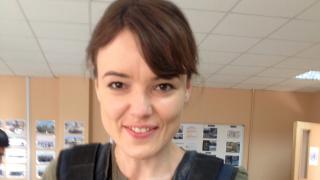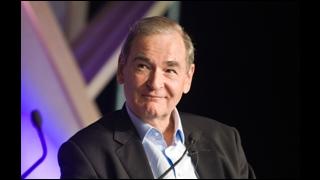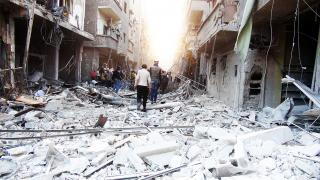There is a growing need to find solutions that address the complex nature of today’s emergencies. There are no clear-cut cases (and arguably never have been) of a humanitarian crisis which has made a linear progression across the aid spectrum – where assistance in the aftermath of a crisis winds up operations, and that space is then neatly filled by long-term development projects. The reality is much more chaotic, contested and ad hoc.
Much of this chaos and contestation stems from the differing guiding principles for humanitarian and development action. Humanitarian assistance, as we know, is guided by the principles of humanity, independence, neutrality and impartiality. The driving focus is often to get lifesaving assistance (such as medicine, water, food etc.) to those who need it most in a crisis, without necessarily addressing the politics or causes of the crisis.
In conflict settings, assistance is often channeled through the UN system or civil society because the government of the country in question may itself be directly involved. In many instances, strict adherence to these principles has been the only way to ensure emergency aid has a hope of reaching its intended recipients, as was the case in Darfur between 2005 and 2008.
Development assistance, on the other hand, takes a very different approach. It is expressly focussed on the national ownership of development strategies, which are then resourced by external development aid. This type of assistance is encouraged to be channeled through government systems and budgets, and is expected to be predictably recurrent and unconditional. Three broad sectors accounted for over 55 per cent of all development assistance provided in 2011 – education and health, social infrastructure and economic infrastructure.
The two approaches are predicated on the differing circumstances in which assistance is provided. Humanitarian agencies work amid armed conflict or violence or in the immediate aftermath of a natural disaster (the word “disaster” is misleading – earthquakes or floods should only be considered disasters if inadequate attention has been paid to preventing the negative consequences of their occurrence).
Development actors are rarely the first to intervene in such situations, often starting operations once a semblance of stability has been established in the crisishit area. In some cases, where long-term core development work was in place before a crisis, development actors may decide to remain in situ.
In addition, over the past decade, development actors have increasingly implemented programmes during a state’s transitional phase, through fragile states or early recovery initiatives. Despite growing budgets for these two areas over the past decade, there remains little agreement about what actually works in transitional circumstances.
The physical location of those receiving emergency assistance is particularly important. For instance, it may not be appropriate to implement long-term, development-focussed programming (such as investments in health infrastructure) in a humanitarian camp setting. These camps are, by design, intended to be temporary facilities, but investing in such infrastructure may encourage permanent settlements. In Haiti, refugee camps that were erected in the aftermath of the January 2010 earthquake have begun to take on a degree of permanence.
That said, in the aftermath of earthquakes or floods, where people have been dispossessed of their homes and livelihoods – but not entirely displaced from their land – there are opportunities for immediate humanitarian relief and long-term development assistance to take place simultaneously.
Indeed, in the area of disaster risk reduction, there is much coordinated work being done by UN agencies, government development bodies and civil society to ensure communities are better able to withstand similar threats in future with measures including flood-proof housing and reinforced water, sanitation and hygiene infrastructure. In countries like Bangladesh, where the threat of floods is recurring, such investments have already started paying dividends in terms of protecting lives and livelihoods.
Strict adherence to their respective principles allows both humanitarian and development actors to achieve successful outcomes with often limited aid resources. But such rigidity is a real problem for meaningful engagement: it hampers the ability to deliver tailored assistance that is responsive to the nuances of the crisis, it prevents innovation and it excludes (or includes) actors based on arbitrary rules not specific to the situation.
Both approaches struggle with the systematic interrogation of the structural causes of crises. Humanitarian intervention appears at first glance to avoid this conversation entirely, and traditional development interventions tend to be focussed entirely on technical solutions to the challenges at hand. Attempts are being made to address these problems, but until the structural rules of humanitarian and development assistance are questioned more deeply, more coordinated efforts will remain at the periphery of possibility.
Deepayan Basu Ray is a Policy Adviser (Resilience and Emergencies) for ActionAid.

















